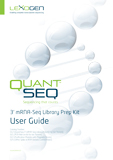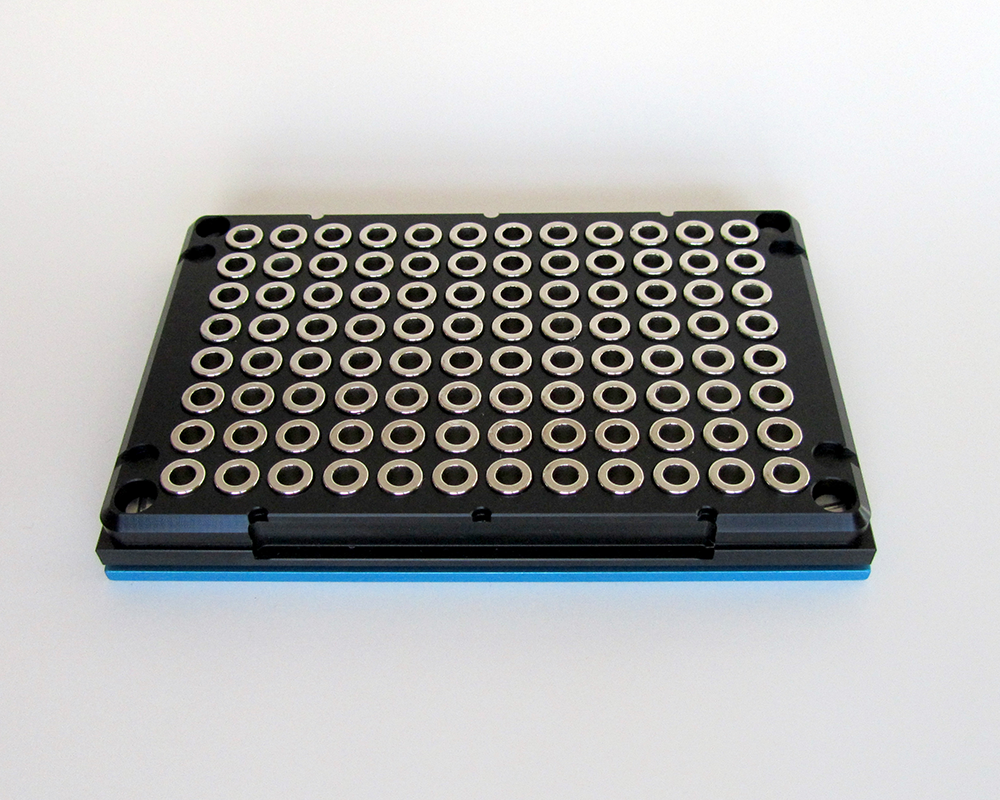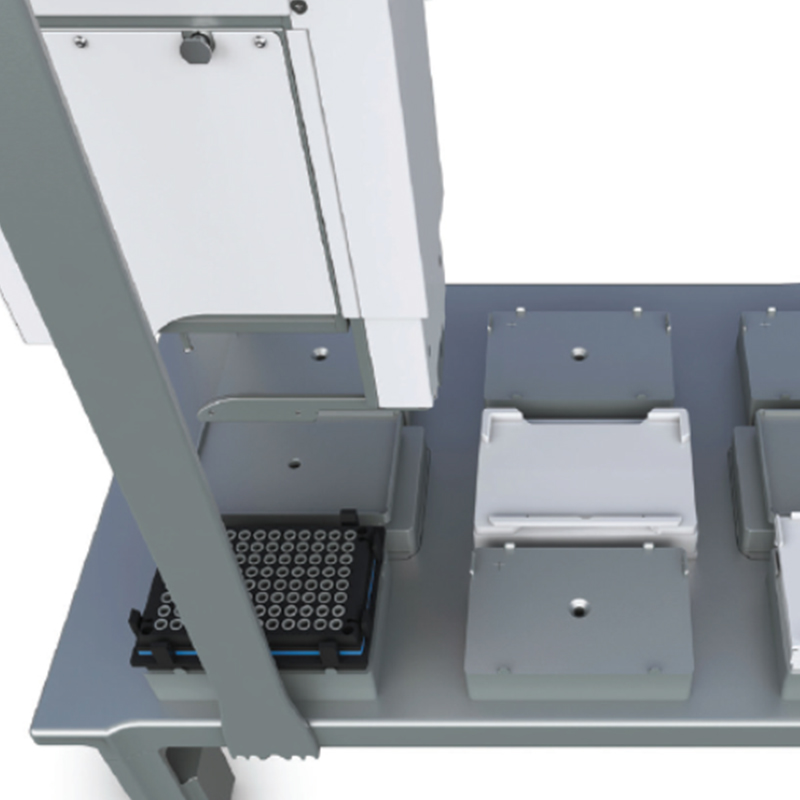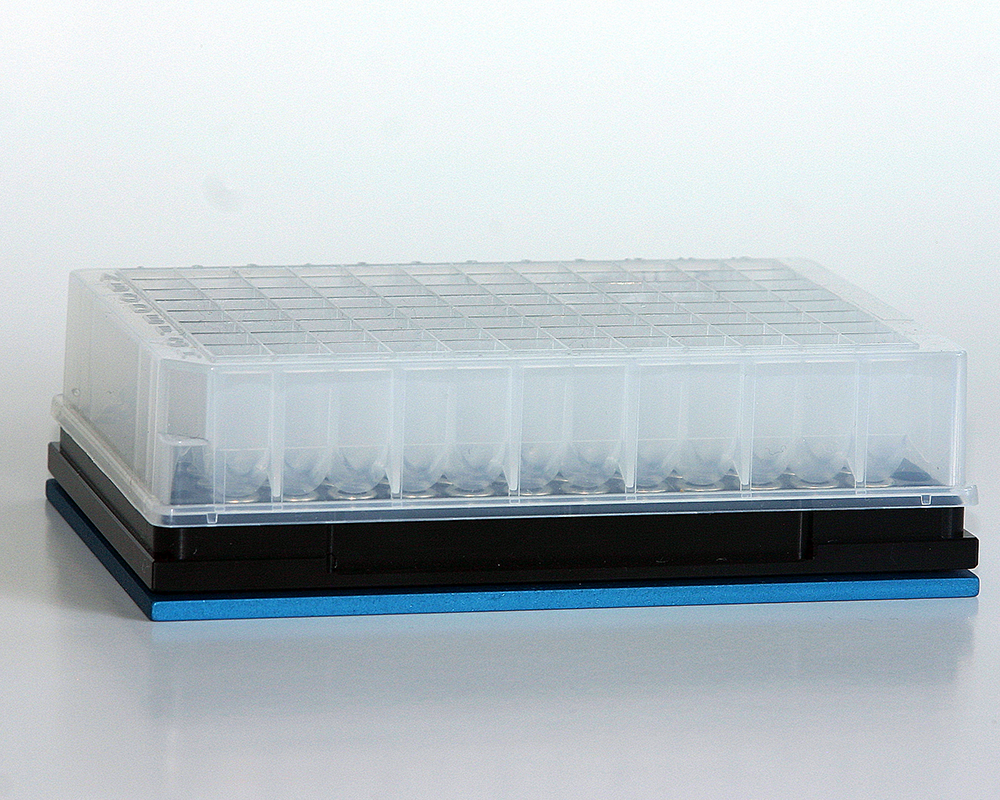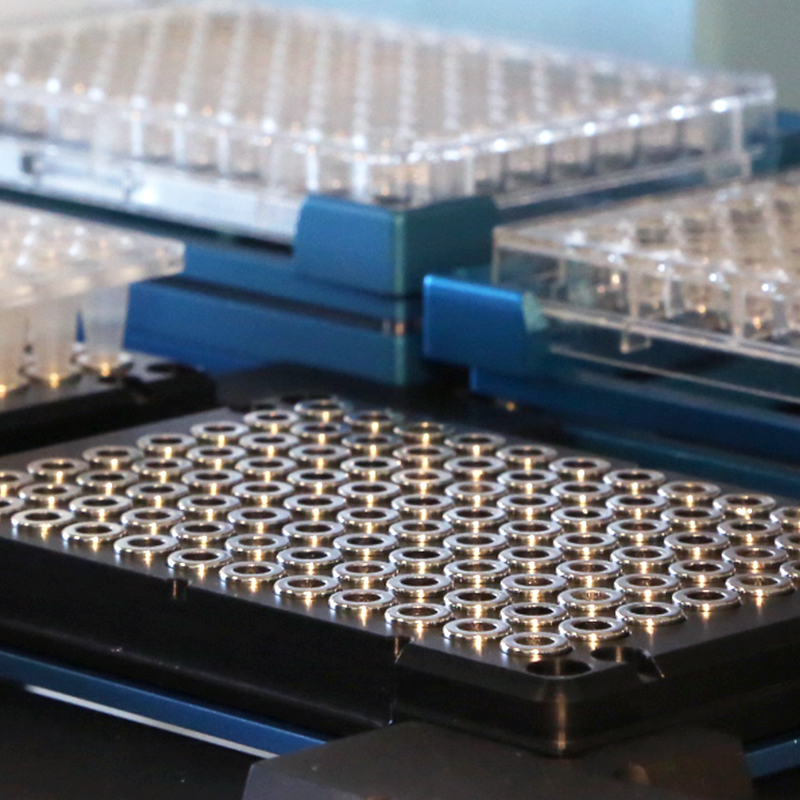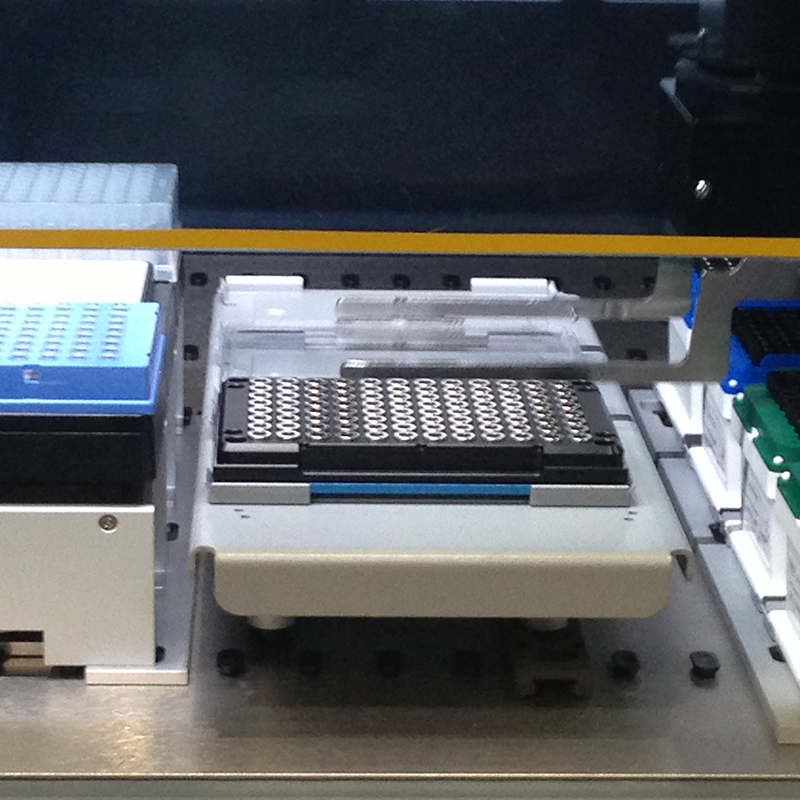96S Super Magnet
- 96 well Magnet Plate
- SKU: A001322
$880.00
Starting from 3 items: 5% off
Starting from 10 items: 10% off
96-well ring- magnet plate with integrated Spring Cushion Technology
for automated magnetic bead separations using a broad range of 96-well microplates. Identical to Beckman Coulter P/N A32782.
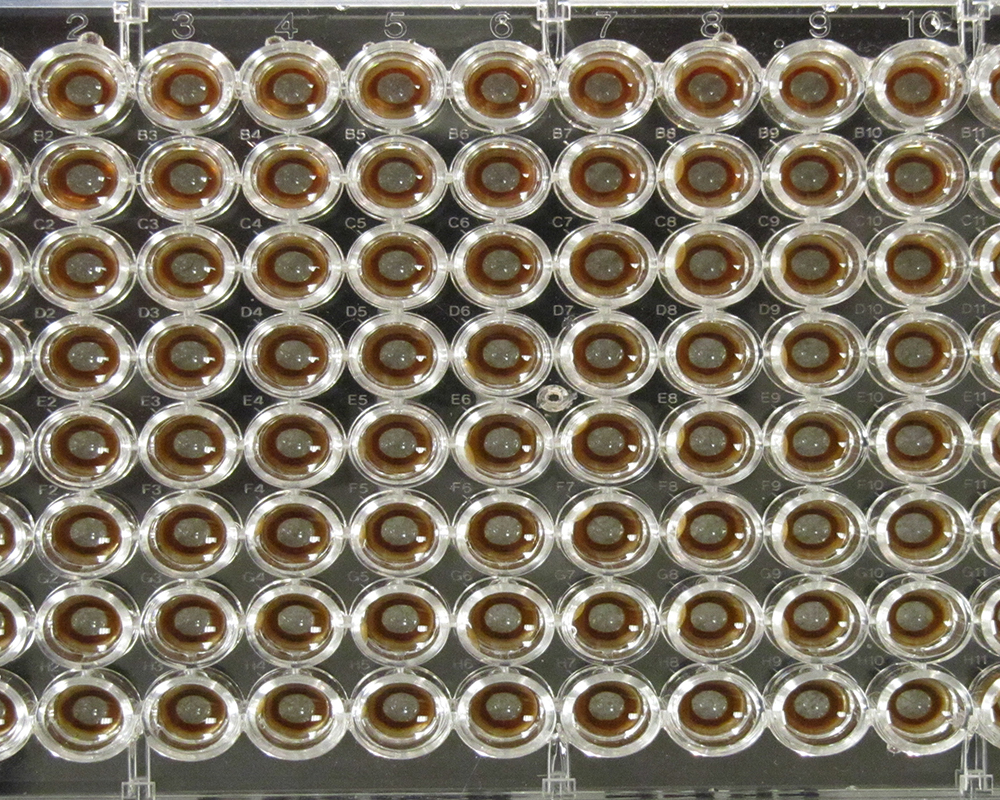
Ring-shaped magnets pull magnetic beads to the well perimeter which allows for maximum aspiration of supernatants, wash solutions, and eluates.
Ring Magnet Benefits:
- Minimizes edge effect because each well has a dedicated magnet
- Faster separations because there is more magnetic material per well
- Expansive 96 well microplate compatibility in comparison to post magnets, including with PCR plates
Automation-friendly
SBS footprint for broad compatibility, gripper grooves for easy robot access, and integrated Spring Cushion Technology
Why do I need Spring Cushion Technology?
Alpaqua magnet plates with integrated Spring Cushion Technology give way when tips come in contact with a well bottom. This compensates for physical tolerances between labware and pipettors that can compromise precision aspiration and ultimately improve pipetting.
- Minimizes tip vacuum & possible pipette head contamination
- Improves pipetting consistency and enables maximum aspiration of samples and reagents
- Maximizes usage of reagents & samples
- Protects instruments & consumables
- Accelerates automated method development
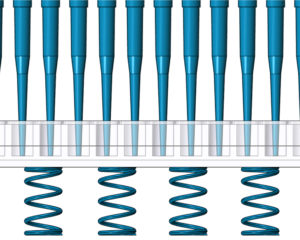
96S Super Magnet Resources
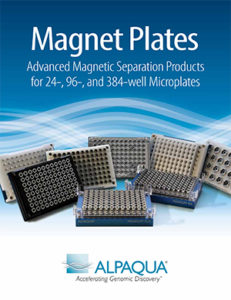
Alpaqua Magnet Plate Brochure
A000270, A000350, A000380, A000400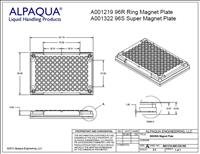
96S/96R Magnet Plate Specifications
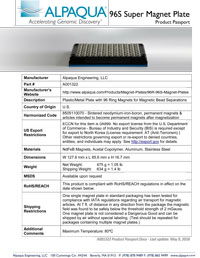
Product Passport – 96S Super Magnet Plate
96S Super Magnet FAQs
Which microplates are compatible with the 96S Super Magnet Plate?
Why does Alpaqua recommend rigid PCR plates?
Are there any 96-well microplates that you know are incompatible?
96S Super Magnet in Literature
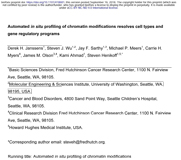
Automated In Situ Chromatin Profiling resolves Cell Types & Regulation
Here we describe an automated CUT&RUN platform and apply it to characterize the chromatin landscapes of human cell lines.
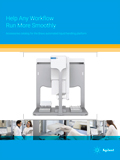
Help Any Workflow Run More Smoothly
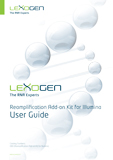
LeXogen Reamplification Add-on Kit for Illumina User Guide
